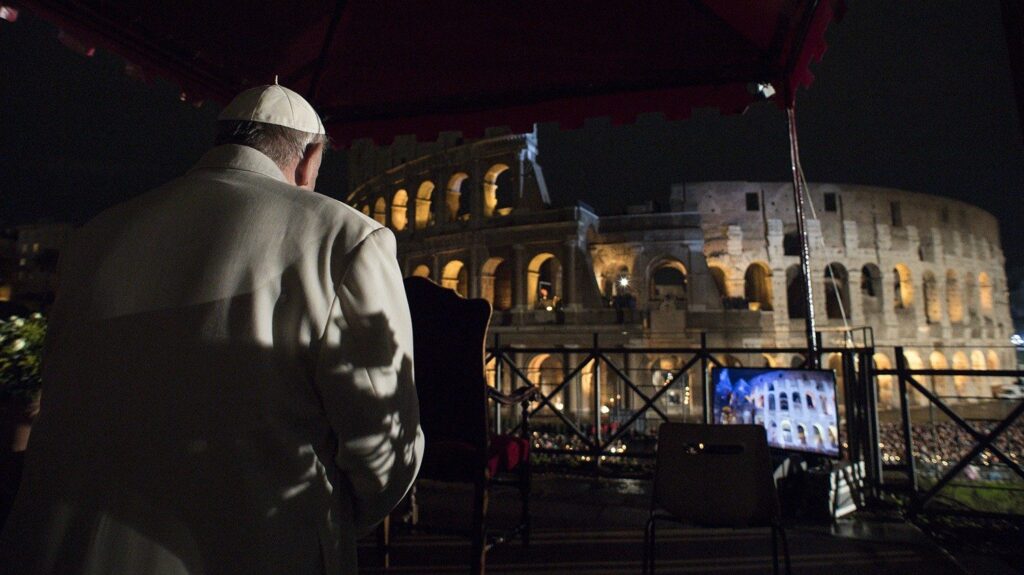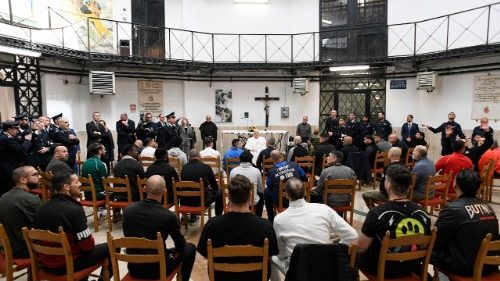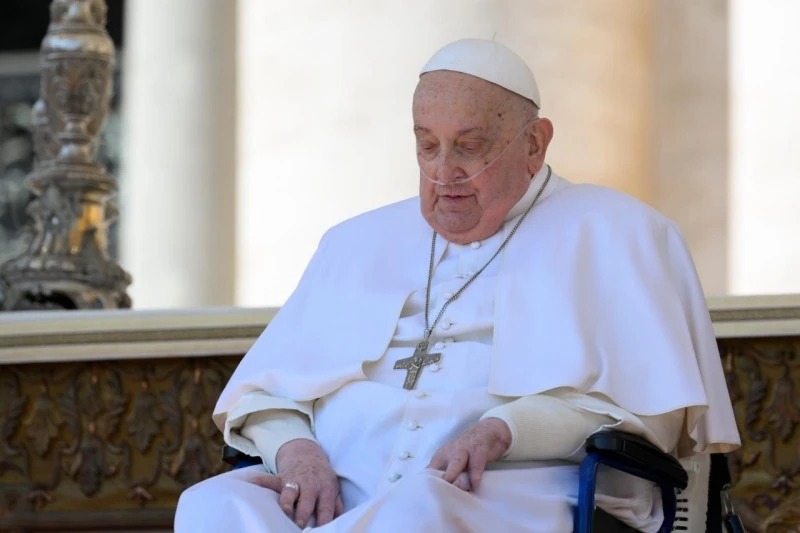The Popes and mercy, the face of love that heals wounds
A week has passed since the Resurrection. Jesus appears to the disciples and shows them the wounds of the Passion. Let’s review some reflections of Saint John Paul II, Benedict XVI and Francis on this day when we celebrate the feast of Divine Mercy

On this Sunday, the first after Easter, the Gospel includes some phrases addressed by the risen Lord to the disciples: «Receive the Holy Spirit. Those who forgive the sins will be forgiven; “To those who are not forgiven, they will not be forgiven.” Before pronouncing these words, Jesus shows his hands and side, the wounds of the Passion. From that heart springs a wave of mercy that envelops all humanity. As Pope Francis wrote in his tweet on the occasion of this Divine Mercy Sunday, we must never doubt the love of God: “Let us entrust our lives and the world to the Lord with constancy and trust, asking him especially for a just peace for tormented nations for the war”.
On this day we celebrate the feast of Divine Mercy, instituted April 30, 2000, by Saint John Paul II during the solemn Eucharistic celebration on the occasion of the canonization of Sister Maria Faustina Kowalska. On that occasion, in his homily, Pope Wojtyla recalled that Christ entrusted his message of mercy to this humble Polish nun between the First and Second World Wars.
“Divine mercy reaches men through the heart of the crucified Christ: «My daughter, say that I am Love and Mercy in person», Jesus will ask Sister Faustina (Diary, p. 374). Christ pours out this mercy on humanity by sending the Spirit who, in the Trinity, is the Person-Love. And isn’t mercy a «second name» of love (cf. Dives in mercy, 7), understood in its deepest and most tender aspect, in its attitude of alleviating any need, above all in its immense capacity for forgiveness?”.
From the heart of Jesus, Sister Faustina, who was born in 1905 and died in 1938, saw two beams of light that illuminate the world: “The two beams,” Christ himself explained to her one day, “represent blood and water.” If blood evokes the sacrifice of the cross and the Eucharistic gift, water – John Paul II explained during the Eucharist for the canonization of Sister Faustina – not only remembers baptism, but also the gift of the Holy Spirit.
Mercy is the face of God
On Divine Mercy Sunday 2008, Benedict XVI underlines, before the Marian prayer of Regina Caeli, that mercy is the core of the evangelical message. It is “the face with which God revealed himself in the Old Covenant and fully in Jesus Christ, the incarnation of creative and redeeming Love.”
“This love of mercy also illuminates the face of the Church and is manifested through the sacraments, especially that of Reconciliation, and through works of charity, community and individual. Everything that the Church says and does manifests the mercy that God has for man. When the Church must remember a forgotten truth, or a betrayed good, she always does so driven by merciful love, so that men may have life and have it in abundance (cf. Jn 10:10). From divine mercy, which pacifies hearts, authentic peace in the world also springs, peace between diverse peoples, cultures and religions.”
Like Sister Faustina, Pope John Paul II was himself an apostle of Divine Mercy. The afternoon of April 2, 2005, when he returned to the Father’s house, was the eve of the second Sunday of Easter.
To be merciful is to meet Jesus
The wounds of Jesus are not distant wounds, confined to a remote time in human history. Pope Francis in 2022, during the Mass of Divine Mercy, exhorts us to care for the wounds of our brothers and sisters who are going through difficult times. God’s mercy, the Pontiff adds, puts us “often in contact with the sufferings of our neighbors.”
“We thought that we were the ones at the peak of suffering, at the height of a difficult situation, and we discovered here, by remaining silent, that someone is going through worse times. And, if we take care of our neighbor’s wounds and pour out mercy on them, a new hope is reborn in us, which consoles us in fatigue. Let us ask ourselves then if in recent times we have touched the wounds of someone who suffers in body or spirit; if we have brought peace to a wounded body or a broken spirit; if we have dedicated a little time to listening, accompanying and consoling. When we do so, we find Jesus, who from the eyes of those who are tested by life, looks at us with mercy and tells us: Peace be with you!
In the disbelief of Saint Thomas, who wants to see the wounds of the Lord, is the story of every believer. “There are difficult moments,” Francis observes, “when it seems that life gives the lie to faith, when we are in crisis, and we need to touch and see. But, like Thomas, it is precisely in those moments when we rediscover the heart of the Lord, his mercy.”
Source: Amedeo Lomonaco – Vatican City
Related

Stations of the Cross 2025: Pope Francis leads Good Friday prayer with his own meditations
Exaudi Staff
18 April, 2025
32 min

Pope Francis brings hope to prisoners: visit to Regina Caeli on Holy Thursday
Exaudi Staff
18 April, 2025
1 min

“Priests as Bearers of Hope”: Pope Francis’ Call at the Chrism Mass
Exaudi Staff
17 April, 2025
1 min

Pope Francis’ Catechesis: God always comes to find us!
Exaudi Staff
17 April, 2025
5 min
 (EN)
(EN)
 (ES)
(ES)
 (IT)
(IT)

